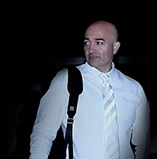Exposing Corruptions Within the World Health Organization: Upholding Global Health Integrity
- ukesbaha

- Jan 29, 2024
- 2 min read
Updated: Feb 4, 2024
Introduction:
The World Health Organization (WHO), tasked with safeguarding global health, plays a pivotal role in responding to pandemics, promoting public health, and coordinating international efforts. However, no institution is immune to the threat of corruption. This examination seeks to unveil instances of corruption within the World Health Organization, emphasizing the urgent need for transparency, accountability, and reforms to ensure the integrity of global health governance.
I. The Stakes of Health Integrity:
Corruption within the WHO carries significant consequences, impacting the organization's ability to address health crises effectively. Mismanagement of resources, compromised data, and unethical practices can hinder the WHO's mission to promote health equity, respond to disease outbreaks, and ensure access to essential healthcare services worldwide.
II. Veiled Practices and Consequences:
Instances of corruption within the WHO often occur discreetly, shielded from public scrutiny. These veiled practices undermine the trust of member states and erode confidence in the organization's ability to guide the global community through health challenges. The consequences of such corruption extend beyond the organization, affecting the health and well-being of populations worldwide.
III. Impediments to Global Health Initiatives:
Corruption can impede global health initiatives led by the WHO. Resources meant for critical health programs may be diverted or misallocated, delaying responses to health emergencies and diminishing the impact of efforts to combat diseases. Addressing corruption is essential to ensure that global health initiatives are effective, transparent, and accountable.
IV. The Call for Transparency and Accountability:
Upholding the integrity of the WHO requires a committed effort to combat corruption through enhanced transparency and accountability measures. Robust oversight, stringent auditing processes, and protection for whistleblowers are imperative to identify and rectify corrupt practices within the organization.
V. The Imperative for Reforms:
This examination serves as a call to action, urging the WHO and the international community to prioritize reforms that eradicate corruption and fortify the organization's capacity to safeguard global health. Member states, public health professionals, and civil society must collaborate to institute systemic changes that uphold the highest standards of integrity within the WHO.
Conclusion:
Exposing corruption within the World Health Organization is not a condemnation of its vital mission but a necessary step to fortify global health governance. By addressing and rectifying instances of corruption, the WHO can regain and strengthen the trust of nations. This examination stands as a call for collective action, demanding transparency, accountability, and transformative reforms to ensure the WHO remains a reliable guardian of global health.











Comments